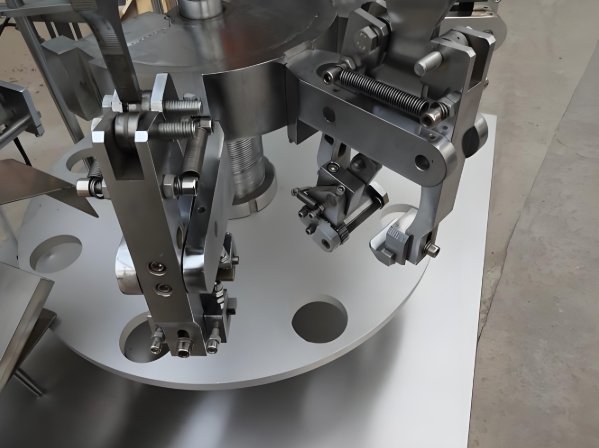
Automotive components must handle extreme forces. These parts require strength, precision, and durability. Automotive Injection Molds ensure these components meet the highest standards. Expert Mold Makers design molds that withstand the toughest conditions. This article discusses the role of injection molds in creating high-impact automotive components.
The Importance of High-Impact Automotive Components
1. Ensuring Safety
High-impact components like bumpers and structural parts protect passengers. These components absorb shock during collisions. Automotive Injection Molds guarantee precise designs for maximum safety.
2. Meeting Durability Standards
Automotive parts must endure constant wear. Components like suspension mounts must stay strong under stress. Durable molds ensure parts last long.
3. Improving Vehicle Performance
Lightweight yet strong components improve fuel efficiency and handling. Injection molding creates high-performance parts.
Why Use Automotive Injection Molds?
1. Exact Replication
Injection molding ensures consistent parts. Every mold produces identical components. This consistency enhances quality.
2. Cost-Effective Production
High-volume manufacturing reduces costs. Molding ensures efficiency with minimal waste.
3. Material Versatility
Automotive Injection Molds work with materials like reinforced plastics and composites. These materials handle impact better.
The Role of the Mold Maker
1. Design Expertise
Mold Makers design molds with extreme precision. They focus on every detail to meet part requirements.
2. Advanced Technologies
They use CAD and CAM tools for precise designs. These tools optimize mold performance.
3. Material Knowledge
Mold Makers select materials that ensure durability. They match materials to each part’s purpose.
High-Impact Components Made with Injection Molds
1. Bumpers
Bumpers absorb collision forces. Injection molding ensures they are strong and reliable.
2. Engine Mounts
Engine mounts need to withstand vibration and stress. Automotive Injection Molds create these components with reinforced plastics.
3. Suspension Parts
Suspension systems require durable and precise parts. Molding ensures tight tolerances for optimal performance.
Materials for High-Impact Components
1. Reinforced Plastics
These materials combine strength and flexibility. They are lightweight yet handle stress well.
2. Composites
Composites offer superior strength. Automotive Injection Molds work well with these materials.
3. Metallic Alloys
For extreme conditions, alloys are used. Molds for metallic components require advanced techniques.
Techniques in Injection Molding
1. Gas-Assisted Injection Molding
This process creates hollow sections in parts. It reduces weight without compromising strength.
2. Overmolding
Overmolding combines multiple materials in one part. This method enhances impact resistance.
3. Insert Molding
Metal inserts are placed in molds before injecting plastic. This technique strengthens parts like engine mounts.
Challenges in High-Impact Component Molding
1. Complex Geometries
Some parts have intricate designs. Advanced molds are needed to create them.
2. Material Compatibility
Materials must match the part’s application. Mold Makers carefully select the best options.
3. Tool Wear
High-impact molds endure significant stress. Regular maintenance ensures precision over time.
Innovations by Mold Makers
1. Simulation Software
Simulations predict how materials will flow in molds. This helps refine designs.
2. Hybrid Molds
These molds combine materials for better durability. They also reduce production time.
3. Smart Molding Systems
Smart molds monitor the injection process. They ensure consistent quality in every part.
Applications of High-Impact Automotive Components
1. Crash Structures
Parts like crumple zones absorb energy during collisions. Injection molding ensures their performance.
2. Drivetrain Components
Transmission parts need to handle torque. Molding creates precise components for smooth operation.
3. Battery Housings for EVs
Electric vehicles require durable battery housings. Injection molds create lightweight and safe housings.
Benefits of Precision Injection Molding
1. Improved Safety
Molding ensures components meet safety regulations. High-impact parts protect passengers.
2. Cost Savings
Precise molds reduce material waste. They also minimize manufacturing defects.
3. Sustainability
Advanced molds use recyclable materials. This supports green manufacturing practices.
Future of Automotive Injection Molds
1. Lightweight Designs
Lightweight parts improve fuel efficiency. Future molds will focus on creating even lighter components.
2. Eco-Friendly Materials
Sustainable materials will replace traditional plastics. Molding processes will adapt to these materials.
3. Automation
Robotics will streamline injection molding. This will increase production speed and accuracy.
High-impact automotive components rely on precision molding. Automotive Injection Molds ensure these parts meet the toughest demands. Skilled Mold Makers play a crucial role in creating durable and reliable components. As the automotive industry evolves, injection molding will remain essential. It ensures safety, durability, and performance in every vehicle.
